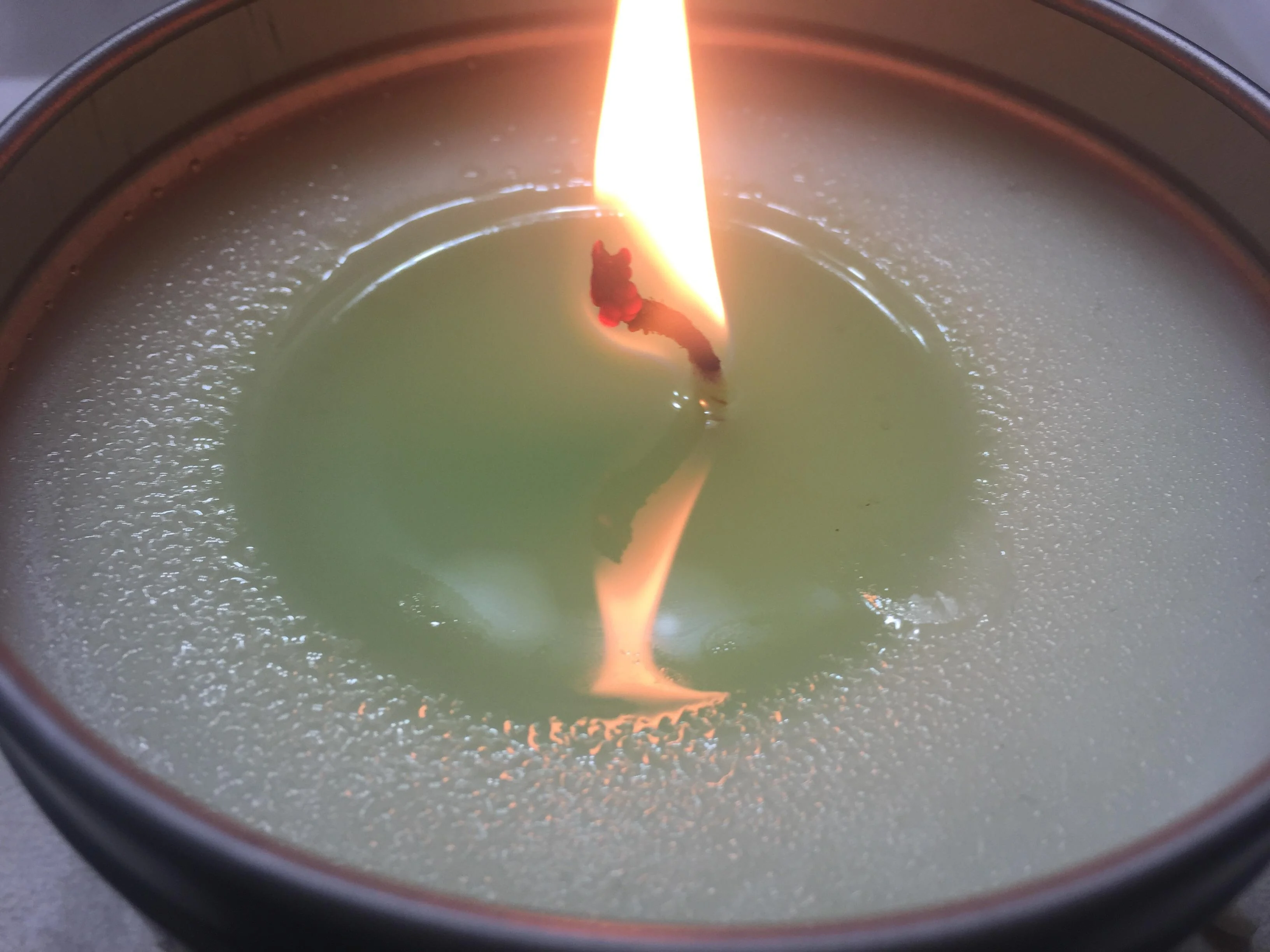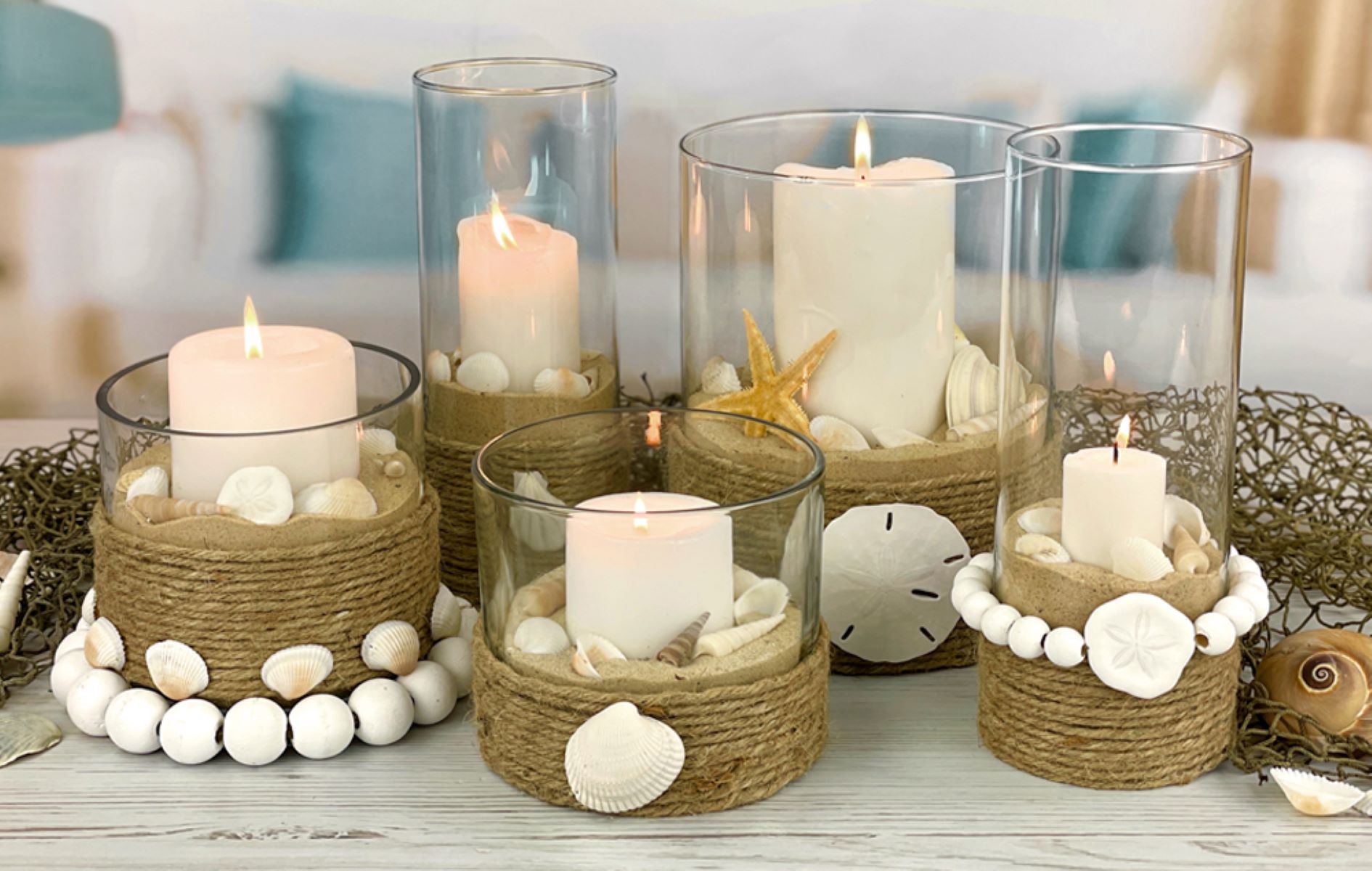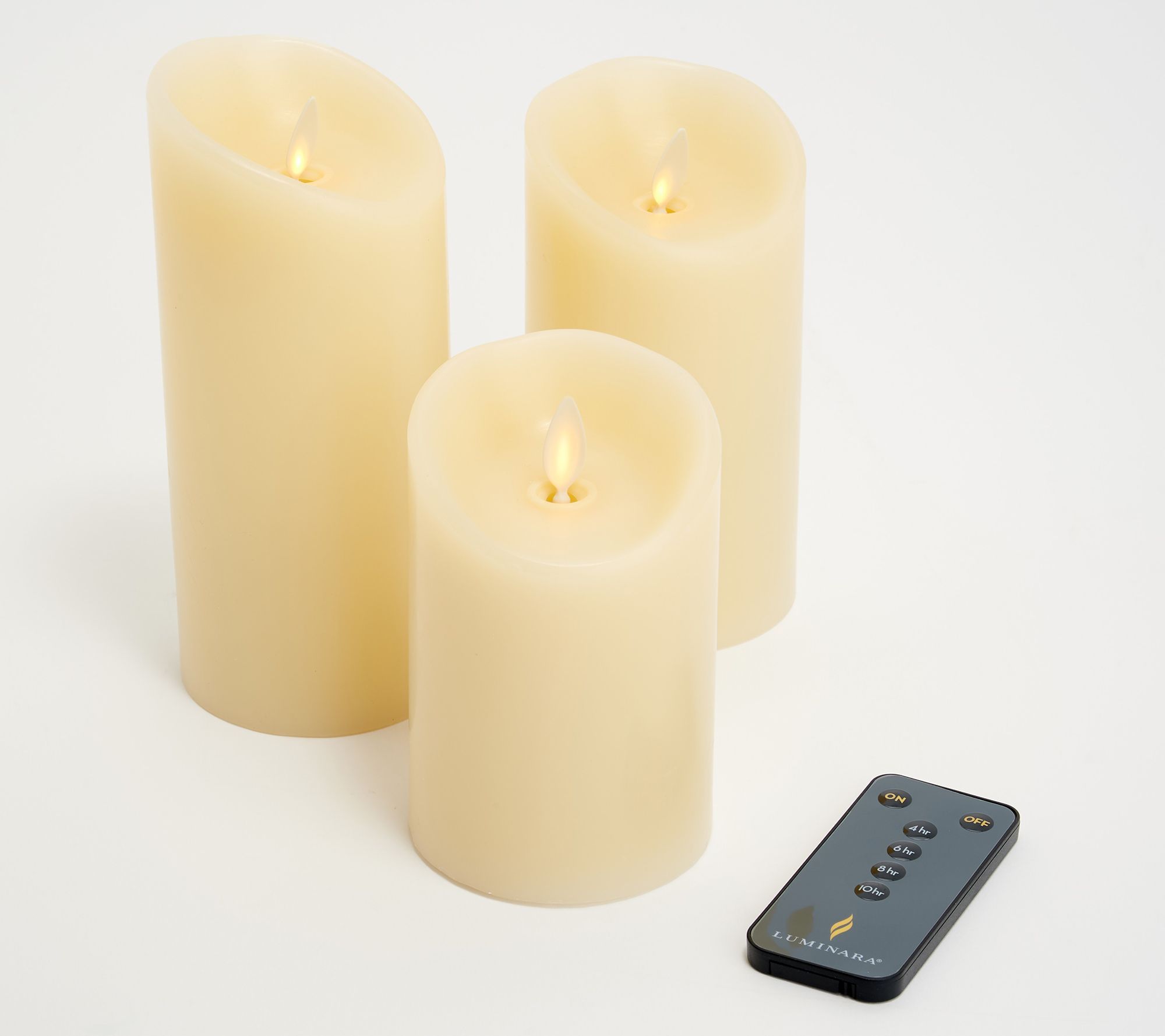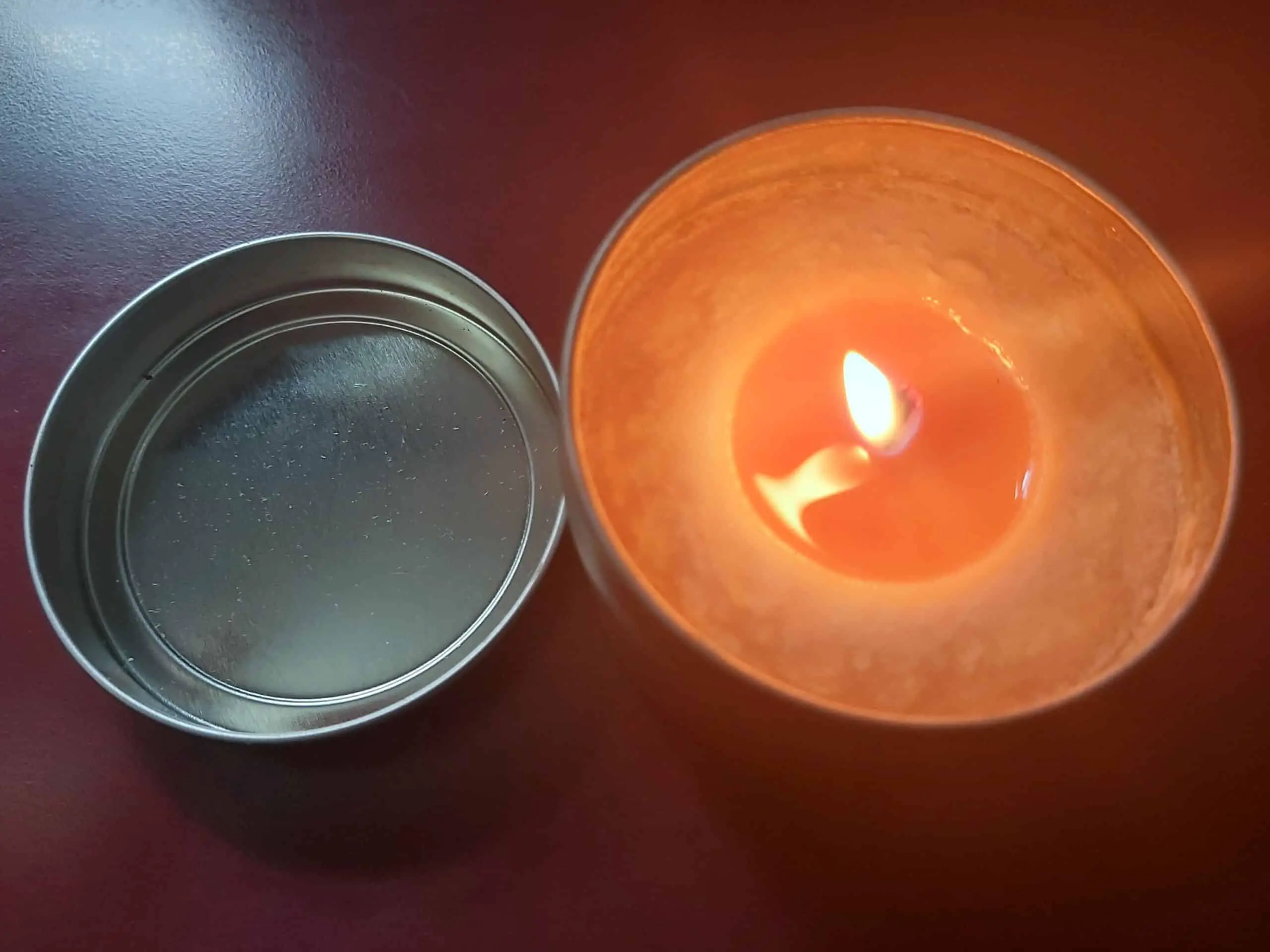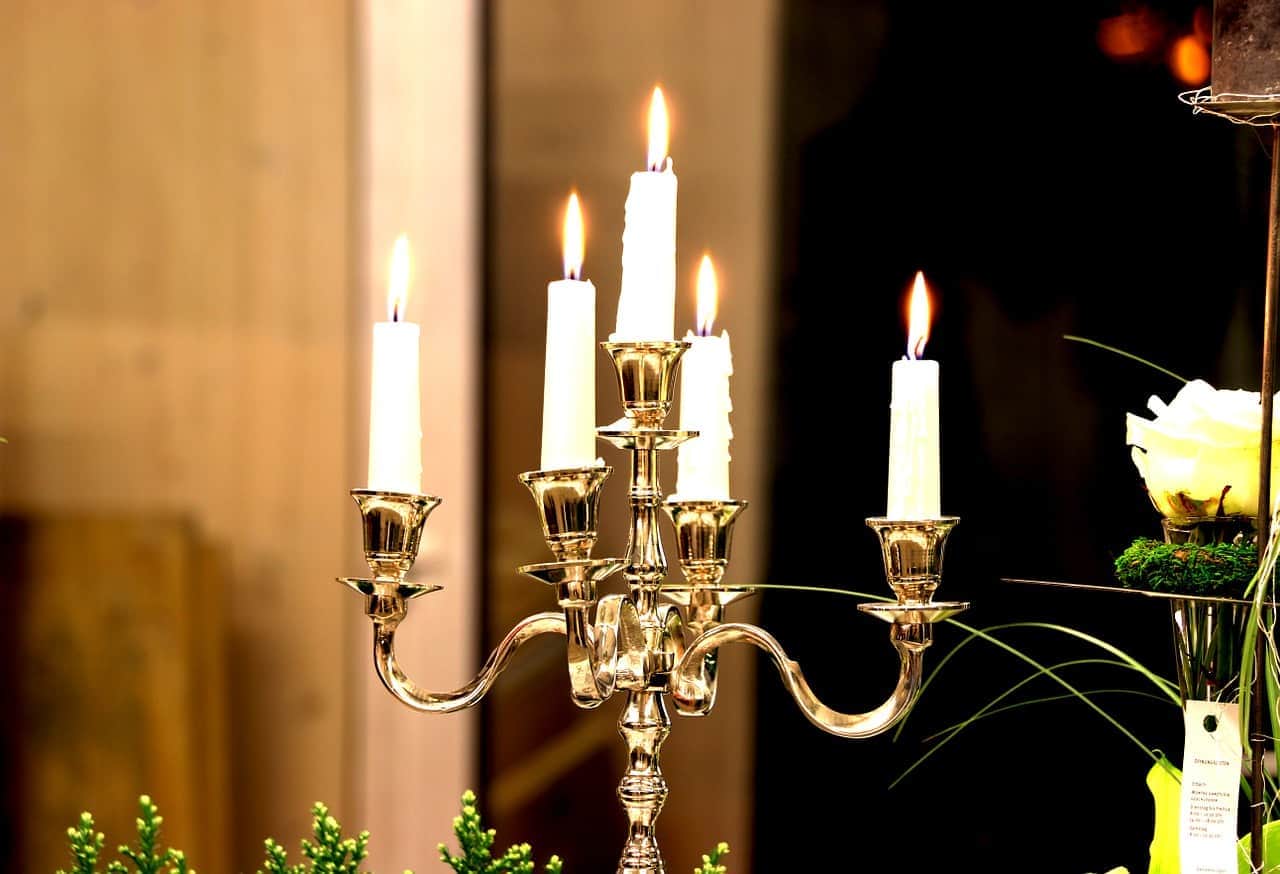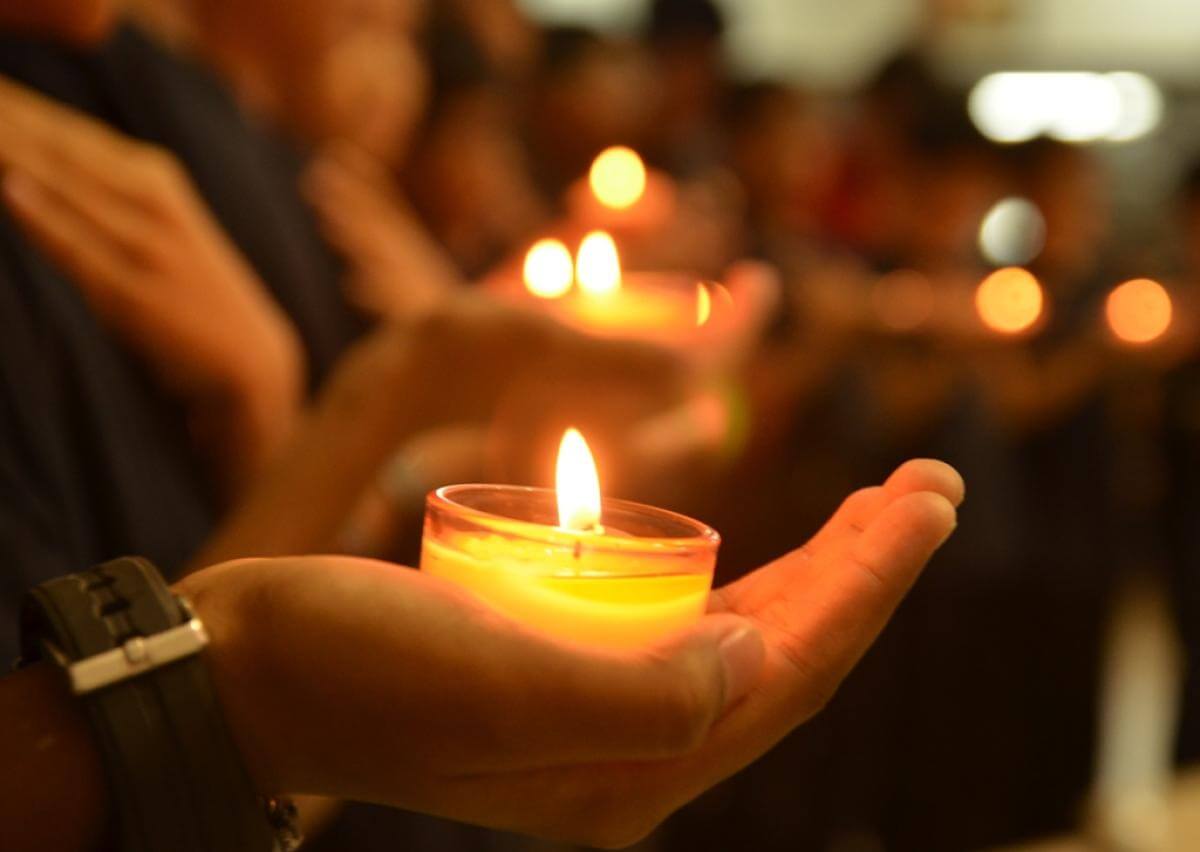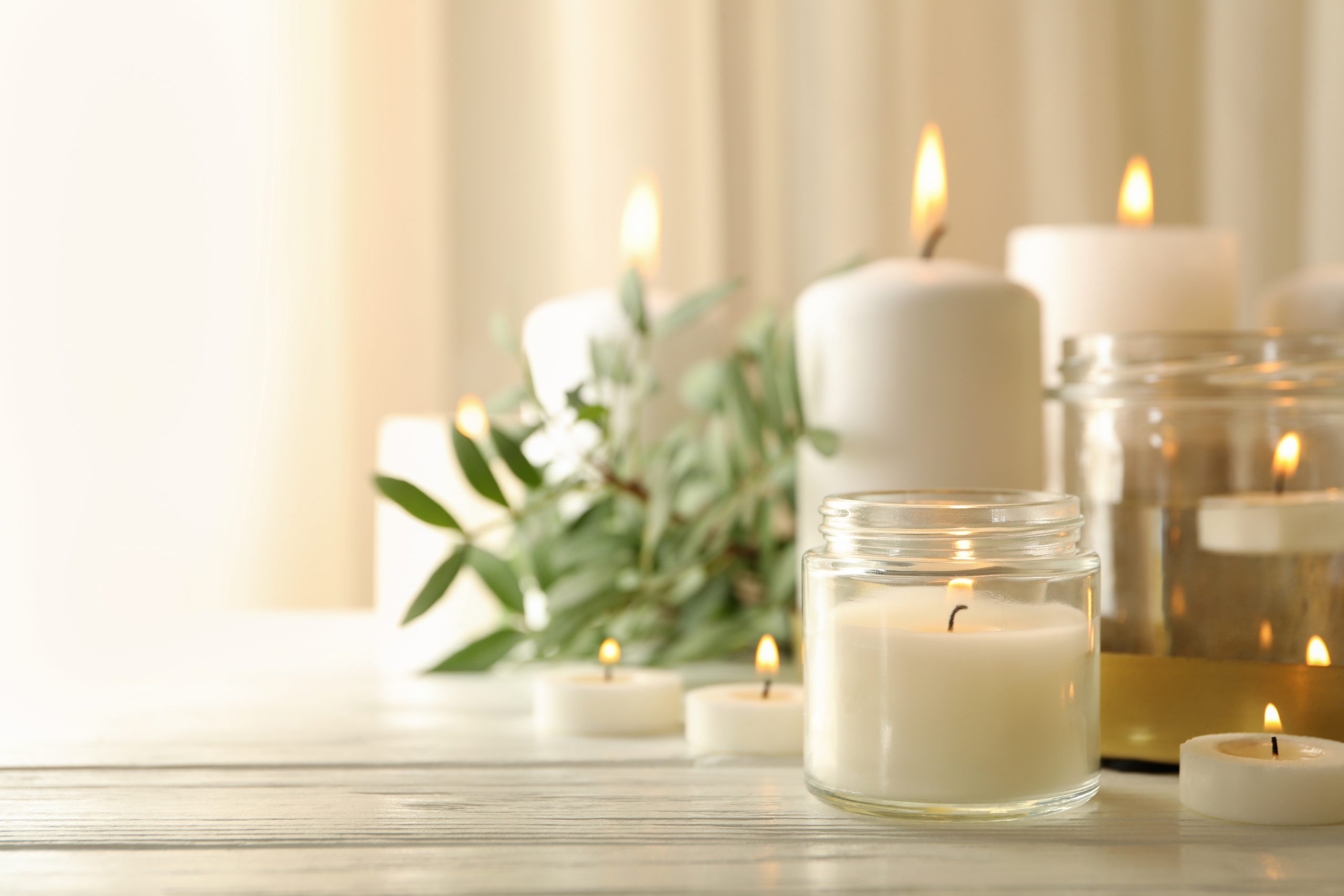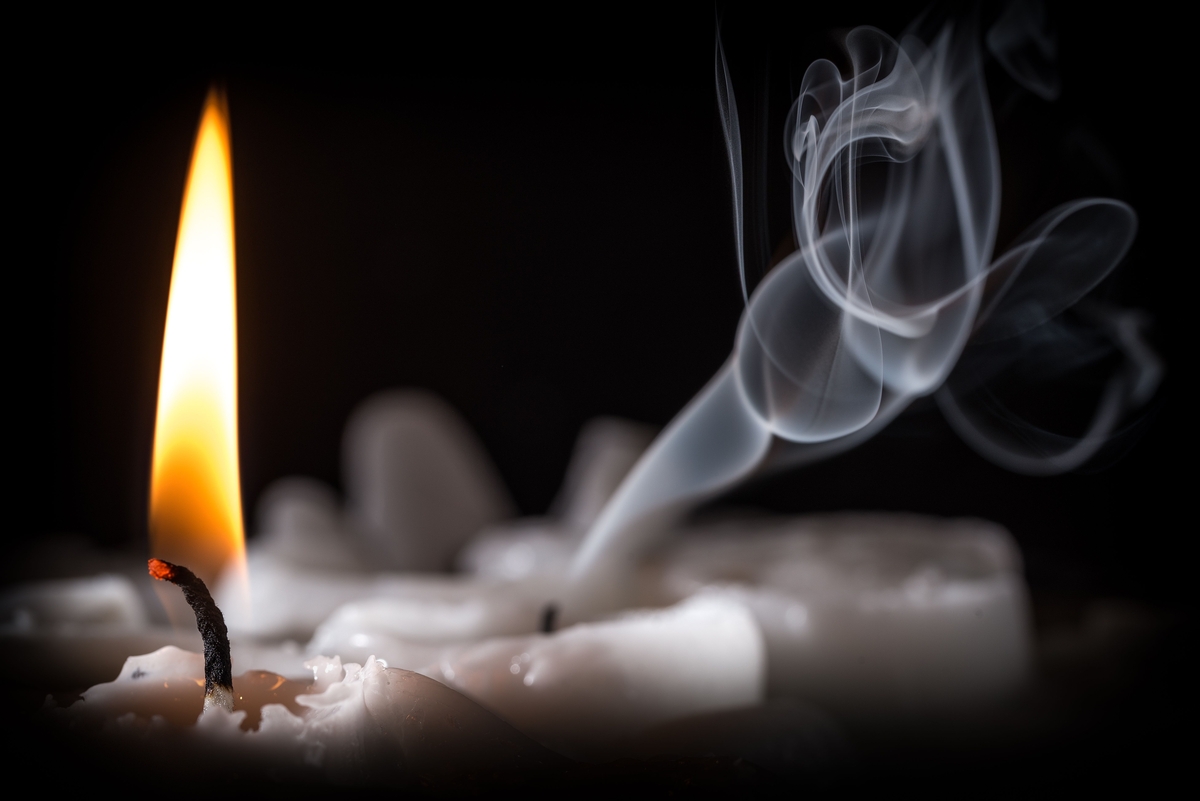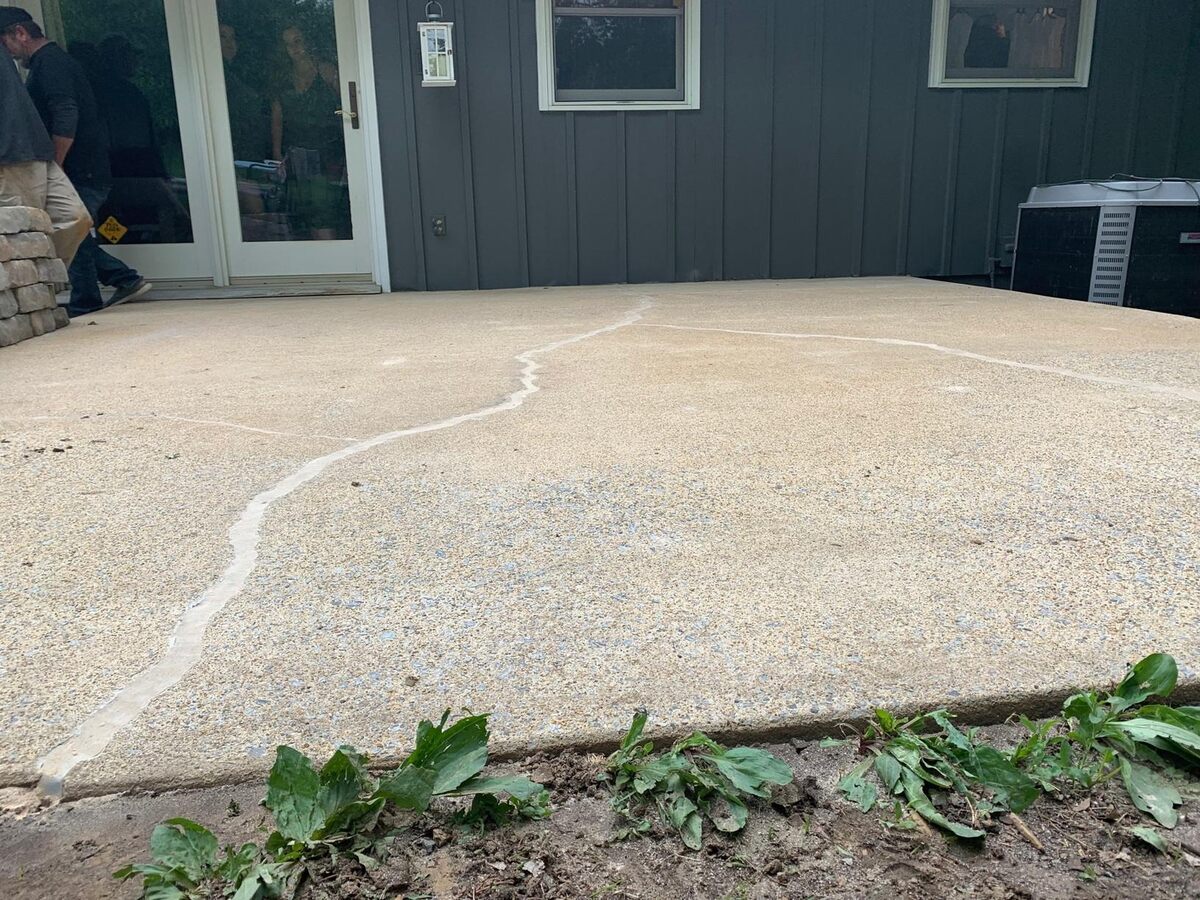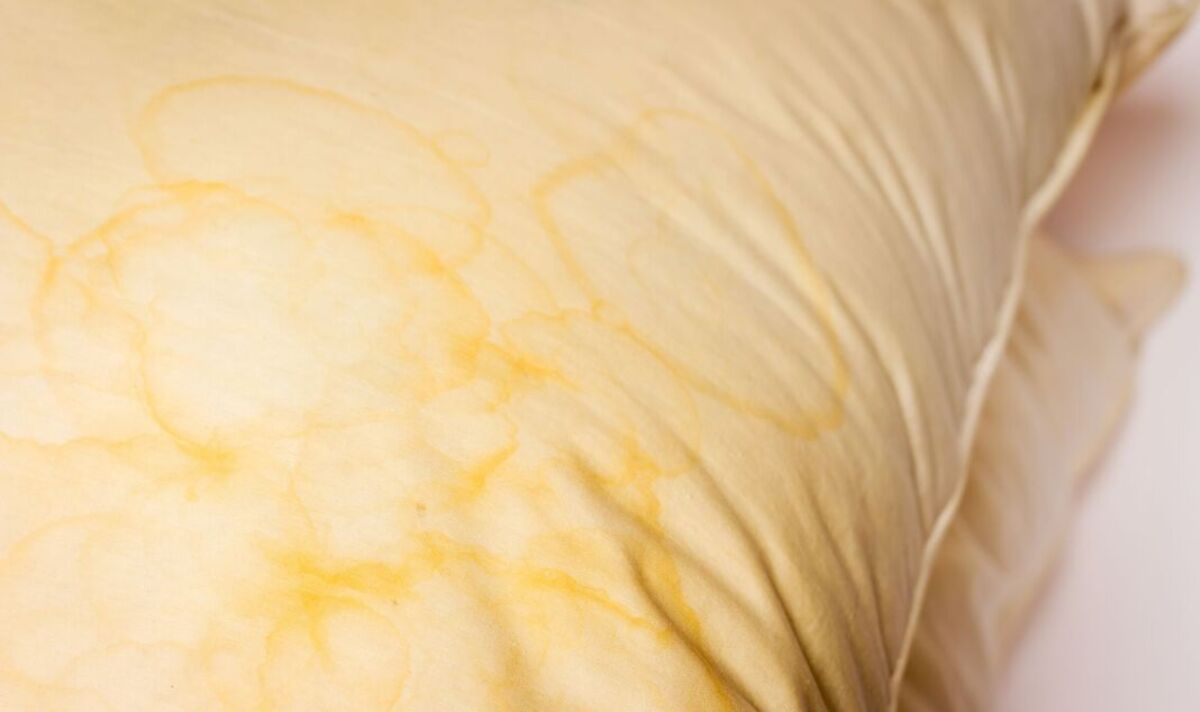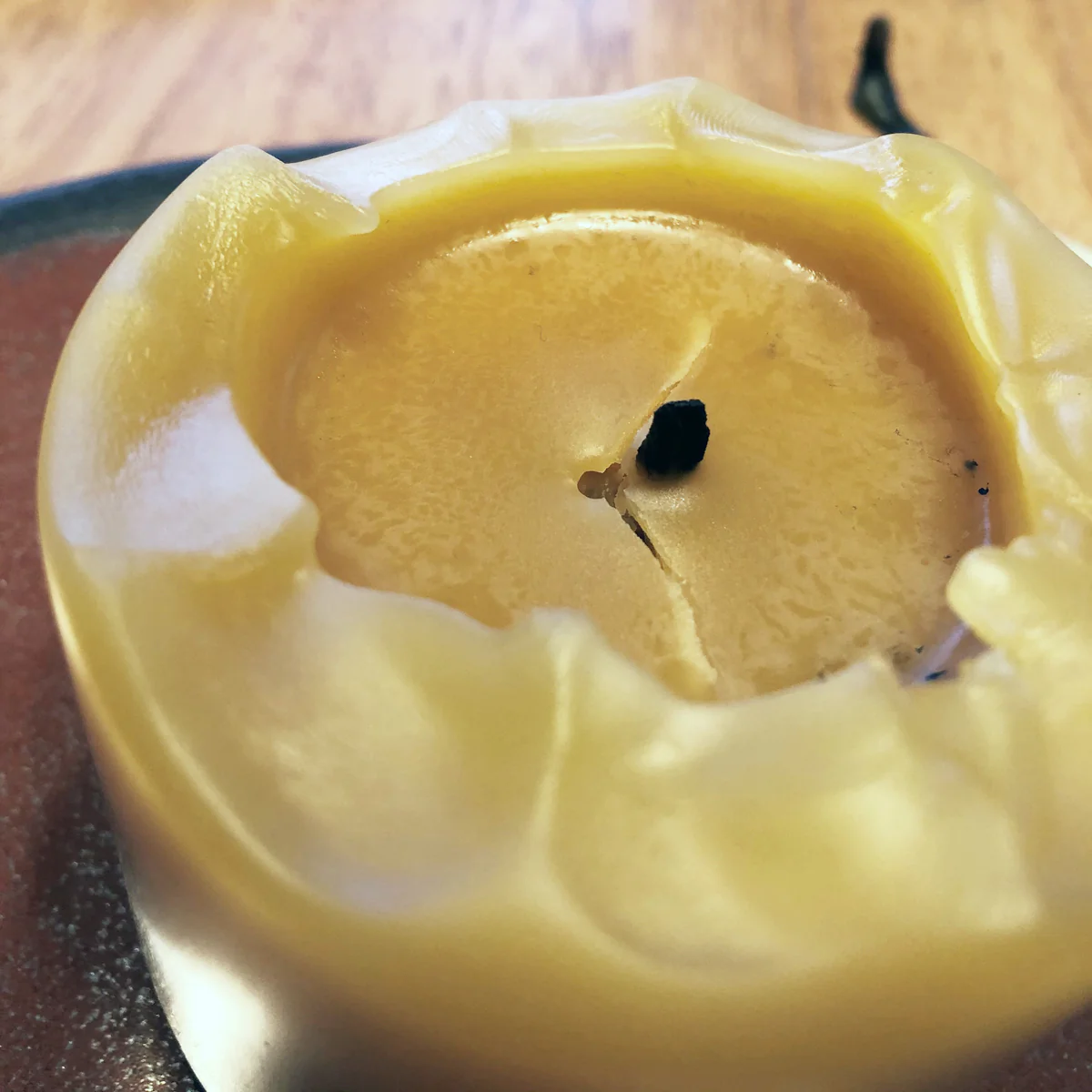

Articles
Why Do My Candles Crack
Modified: October 20, 2024
Find out why your candles crack in this informative article. Learn the causes and how to prevent this common issue for a longer-lasting candle experience.
(Many of the links in this article redirect to a specific reviewed product. Your purchase of these products through affiliate links helps to generate commission for Storables.com, at no extra cost. Learn more)
Introduction
There’s nothing quite as relaxing and comforting as burning a beautiful scented candle. The soft glow and tantalizing fragrance create a calming ambiance that can transform any space into a sanctuary. However, it can be disheartening to discover that your cherished candles have developed unsightly cracks. No one wants to spend their hard-earned money on candles that look worn and damaged.
In this article, we will explore the reasons why candles crack and what you can do to prevent it. Understanding the causes behind this common issue will not only help you prolong the lifespan of your candles but also help you make informed choices when purchasing new ones.
Key Takeaways:
- Understanding the causes of candle cracking, such as temperature fluctuations and poor quality, is crucial. By creating a stable environment, choosing high-quality candles, and using proper heating and pouring techniques, you can prevent unsightly cracks and enjoy long-lasting, beautiful candles.
- Using fragrance and dye in moderation, following recommended usage rates, and conducting small-scale tests will help maintain the balance between aesthetics and structural integrity. By being mindful of these factors, you can ensure crack-free candles that provide a soothing and visually appealing ambiance.
Read more: Why Is My Ceiling Cracking?
Understanding Candle Cracking
Candle cracking refers to the phenomenon where candles develop visible cracks on their surface. These cracks can range from small hairline fractures to larger crevices that can significantly impact the aesthetic appeal of the candle. Cracking can occur on various types of candles, including pillar candles, jar candles, and even taper candles.
This problem typically arises due to a combination of factors such as temperature fluctuations, poor candle quality, overheating of the wax, incorrect pouring techniques, and the excessive use of fragrance or dye. Understanding these causes is crucial in identifying the root of the issue and taking the necessary steps to prevent cracking.
Cracking not only affects the visual appeal of the candle but may also impact its burn time and performance. When a candle cracks, it can affect its ability to hold its shape properly, leading to an uneven burn and potential wax leakage. Moreover, cracks can allow air to enter the candle, which can cause the wick to burn less efficiently and result in a shortened burn time.
It’s important to note that not all cracks in candles are created equal. Some cracks may be superficial and have no significant impact on the candle’s burn or performance. However, others may penetrate deeper and compromise the structural integrity of the candle.
In the following sections, we will delve into the specific causes of candle cracking and explore how each factor contributes to this issue. By gaining a deeper understanding of these causes, you will be better equipped to prevent cracks from forming in your candles, ensuring that they maintain their beauty and functionality.
Causes of Candle Cracking
Cracking in candles can be attributed to several factors, including temperature fluctuations, poor candle quality, overheating of the wax, incorrect pouring techniques, and the excessive use of fragrance or dye. Let’s explore each of these causes in more detail:
- Temperature Fluctuations: Candles are sensitive to temperature changes. Exposure to extremes in temperature can cause the wax to expand or contract rapidly, leading to cracks. For example, placing a candle near a heat source like a radiator or direct sunlight can cause the wax to become too hot, resulting in cracking when it cools down.
- Poor Candle Quality: The quality of the candle itself can contribute to cracking. Low-quality candles often contain inferior waxes and additives that are more prone to cracking. It’s essential to invest in candles from reputable brands or artisans who prioritize quality ingredients.
- Overheating the Wax: When melting the wax to pour into a container or mold, overheating can lead to cracking. If the wax is heated to a temperature above its recommended range, it can cause stress on the wax structure, resulting in cracks once it solidifies.
- Incorrect Pouring Techniques: The way the wax is poured into the container or mold can also contribute to cracking. Pouring wax too quickly or from too high of a distance can create air bubbles and uneven cooling, leading to cracks.
- Using Fragrance or Dye in Excess: While adding fragrance or dye to candles can enhance their appeal, using them in excess can cause cracking. Both fragrance oils and dyes have specific usage rates recommended by manufacturers. Going beyond these limits can disrupt the wax’s composition and lead to cracking.
By addressing these causes, you can significantly reduce the chances of your candles developing cracks. In the next section, we will discuss various preventive measures you can take to ensure your candles remain crack-free.
Temperature Fluctuations
Temperature fluctuations can have a significant impact on the structural integrity of candles, leading to cracking. Understanding how temperature affects your candles is crucial in preventing this issue.
When candles are exposed to extreme temperature changes, the wax expands or contracts quickly, causing stress on the candle’s surface. For example, if a candle is placed in a hot environment, such as near a heat source or in direct sunlight, the wax can become too soft and begin to melt. As it cools down, it may harden unevenly and develop cracks.
On the other hand, subjecting candles to extremely cold temperatures can cause the wax to contract and become brittle. When the candle is lit, the heat generated can cause the wax to expand rapidly, resulting in cracks.
To prevent temperature-related cracks, it is essential to store your candles in a cool, dry place away from direct sunlight and heat sources. Avoid placing them on windowsills, near radiators, or in areas prone to temperature fluctuations. By maintaining a stable environment for your candles, you minimize the risk of cracks due to rapid expansion or contraction of the wax.
If you enjoy burning candles outdoors, be mindful of the weather conditions. Extreme heat or cold can affect the candles’ integrity, so it’s best to bring them indoors during severe temperature fluctuations. Additionally, when transporting candles, take care to avoid exposing them to extreme temperatures, especially during hot summer or cold winter months.
By being mindful of temperature fluctuations and implementing proper storage and care practices, you can preserve the quality and integrity of your candles and prevent unsightly cracks from forming.
Poor Candle Quality
The quality of a candle plays a crucial role in its susceptibility to cracking. Low-quality candles that are made with inferior ingredients and manufacturing processes are more prone to developing cracks. Understanding the importance of candle quality can help you make informed decisions when purchasing candles.
One of the primary factors that contribute to poor candle quality is the use of low-grade waxes and additives. Cheaper waxes, such as paraffin or blended waxes, may not have the same structural integrity as higher-quality options like soy wax or beeswax. These inferior waxes are more likely to develop cracks when exposed to temperature changes or stress.
In addition to the wax, the additives and fragrances used in low-quality candles can also impact their overall quality. Some manufacturers may use low-quality fragrance oils or dyes that can affect the composition and stability of the candle. Choosing candles from reputable brands that prioritize high-quality ingredients can help minimize the risk of cracking.
When purchasing candles, look for labels or product descriptions that indicate the use of premium-quality waxes, such as soy or beeswax. High-quality candles are more likely to withstand temperature fluctuations and maintain their structural integrity over time.
Furthermore, consider supporting local artisans or small businesses known for their craftsmanship and commitment to quality. These candles are often made in small batches, ensuring attention to detail and superior quality control.
By investing in high-quality candles from reputable sources, you can minimize the likelihood of cracks developing. The use of premium waxes and additives, along with skilled manufacturing processes, will not only enhance the aesthetic appeal of the candles but also ensure their durability and longevity.
Read more: Why Is My Spackle Cracking
Overheating the Wax
Overheating the wax is a common cause of cracking in candles. When the wax is heated to temperatures beyond the recommended range, it undergoes excessive stress and can lead to structural damage.
Each type of wax has a specific melting point and pouring temperature range. It is crucial to follow the manufacturer’s guidelines or specific instructions provided with the candle-making kit to ensure the wax is heated to the appropriate temperature.
When the wax is heated too high, it becomes thin and loses its structural integrity. As the wax cools down and solidifies, it may contract at an uneven rate, resulting in cracks on the candle’s surface.
To avoid overheating the wax, use a reliable candy thermometer or a digital thermometer specifically designed for wax melting. These thermometers allow you to monitor the temperature accurately and ensure it remains within the recommended range.
Additionally, use a double boiler or a dedicated wax melting pot to heat the wax gently and evenly. This method reduces the risk of overheating and maintains a more controlled temperature throughout the melting process.
If you notice that your candles consistently develop cracks, it may be worthwhile to invest in a temperature-controlled wax melter or a candle-making kit that includes a heating apparatus with built-in temperature regulation.
By taking the necessary precautions and following proper heating techniques, you can avoid overheating the wax and minimize the risk of cracking in your candles.
Incorrect Pouring Techniques
The way the wax is poured into the container or mold can significantly impact the likelihood of cracking in candles. Incorrect pouring techniques can introduce air bubbles and cause uneven cooling, leading to structural weaknesses and cracks.
When pouring the wax, it’s essential to do so slowly and steadily, ensuring a controlled flow. Pouring too quickly can create turbulence and trap air bubbles within the wax, which can weaken the structure and result in cracks once the wax solidifies.
Furthermore, pouring the wax from too high of a distance can also introduce air bubbles and cause disruptions in the cooling process. Aim to pour the wax from a height that allows for a smooth and even distribution without excessive splashing or disturbance.
Another common mistake is pouring the wax at an incorrect temperature. If the wax is too hot when poured, it can cause rapid cooling and contraction, leading to cracks. Conversely, if the wax is too cool, it may not properly adhere to the container or mold, resulting in weak spots and potential cracking.
When pouring the wax, try to maintain a pour temperature that is within the recommended range for the specific type of wax being used. This ensures proper adhesion and minimizes the risk of cracking.
It’s also essential to allow the wax to cool and solidify undisturbed after pouring. Avoid moving or jostling the candle until the wax has completely solidified, as this can disrupt the cooling process and contribute to cracking.
By adopting correct pouring techniques, you can prevent air bubbles, promote even cooling, and minimize the chances of cracks developing in your candles. Taking the time to pour the wax carefully and at the correct temperature will result in candles that are not only visually appealing but also structurally sound.
To prevent candles from cracking, try to avoid sudden temperature changes while they are setting. Allow them to cool slowly and evenly to reduce the risk of cracking.
Using Fragrance or Dye in Excess
The use of fragrance oils and dyes can add an extra touch of beauty and aroma to your candles. However, using these additives in excess can contribute to cracking in candles.
Both fragrance oils and dyes have recommended usage rates provided by manufacturers. These rates are designed to ensure that the additives do not adversely affect the composition of the wax or compromise the structural integrity of the candle.
Using an excessive amount of fragrance oil can impact the balance of the wax formulation, leading to inconsistencies in cooling and potential cracking. Furthermore, certain fragrance oils may contain ingredients that can react with the wax, causing it to become unstable and prone to cracks.
Similarly, using an excessive amount of dye in your candles can affect the overall composition and stability of the wax. The dye can alter the wax’s melting and cooling characteristics, causing uneven cooling and potential cracking.
To prevent cracking caused by excessive fragrance or dye usage, it is vital to follow the recommended guidelines provided by the manufacturers. Use the suggested amount of fragrance oil or dye specified for the particular type and quantity of wax you are working with.
Additionally, consider conducting test batches when experimenting with fragrance or dye combinations to identify any potential issues before making larger quantities of candles. This allows you to observe how the additives interact with the wax and make adjustments accordingly to achieve the desired scent and color without compromising the candle’s structural integrity.
By using fragrance oils and dyes in moderation, you can ensure that your candles maintain their beauty and fragrance without the risk of developing cracks. Following recommended usage rates and conducting small-scale tests will help you achieve a harmonious balance between aesthetics and structural integrity.
Preventing Candle Cracking
To prevent candle cracking and ensure that your candles remain visually appealing and structurally sound, there are several preventive measures you can take. By implementing these steps, you can prolong the lifespan of your candles and enjoy them to the fullest extent. Let’s explore some effective strategies:
- Keeping the Environment Stable: Temperature fluctuations are a common cause of candle cracking. To minimize this risk, store your candles in a cool, dry place away from direct sunlight and heat sources. Avoid exposing them to extreme temperatures or sudden changes in temperature.
- Choosing High-Quality Candles: Investing in candles made from premium-quality ingredients is crucial. Opt for candles made with high-grade waxes, such as soy or beeswax, as these tend to be more resistant to cracking. Choose candles from reputable brands or artisans known for their craftsmanship and commitment to quality.
- Proper Wax Heating and Pouring: When melting the wax, ensure you heat it within the recommended temperature range provided by the manufacturer. Use a reliable candy thermometer to monitor the temperature accurately. When pouring, do so slowly and steadily, avoiding excessive splashing or introducing air bubbles in the process.
- Using Fragrance and Dye in Moderation: Follow the recommended usage rates for fragrance oils and dyes to prevent disruptions in the wax’s composition. Conduct small-scale tests when experimenting with new scents or colors to ensure the additives do not adversely affect the structural integrity of the candles.
By implementing these preventive measures, you can significantly reduce the chances of your candles developing unsightly cracks. Creating a stable environment for your candles, using high-quality ingredients, and being mindful of proper heating and pouring techniques will help ensure that your candles remain beautiful and functional.
Remember that candle cracking can also be influenced by external factors, such as humidity levels and airflow. It is important to strike a balance between aesthetics and functionality when making or purchasing candles. Taking the time to understand the causes and prevention of candle cracking will enhance your overall candle experience and allow you to enjoy their soothing glow and delightful fragrances for a long time to come.
Read more: Why Do My Candles Burn So Fast
Keeping the Environment Stable
Creating a stable environment for your candles is essential in preventing cracking and ensuring their longevity. Temperature fluctuations and exposure to extreme conditions can have a detrimental effect on the structural integrity of candles. Here are some tips for keeping the environment stable:
Avoid Direct Sunlight: Direct sunlight can cause wax to melt or soften, potentially leading to deformation or cracking. Keep your candles away from windowsills or other areas where they may be exposed to direct sunlight for extended periods.
Controlled Temperature: Extreme temperatures, whether hot or cold, can impact the quality of your candles. Avoid placing them near heat sources like radiators or air conditioning units, as these can cause the wax to soften or become brittle. Additionally, refrain from storing candles in excessively cold or hot areas, such as unheated basements or attics.
Consistent Humidity: Fluctuations in humidity levels can affect the appearance and performance of candles. High humidity can cause the surface of the candle to become greasy or wet, while low humidity can result in the wax drying out and cracking. Aim for a moderate and consistent humidity level in the area where you store or burn candles.
Avoid Drafts: Strong drafts of air can cause the flame of a burning candle to flicker, potentially causing uneven burning and wax pooling. This can lead to structural issues and cracking. Keep candles away from areas with heavy drafts, such as open windows, doorways, or air vents.
Storage Conditions: Proper storage is key to maintaining the quality of your candles. Store them in a cool, dry place in airtight containers to protect them from exposure to moisture or dust. Ensure that the storage area is away from direct sunlight and extreme temperature fluctuations.
By taking these steps to create a stable environment for your candles, you can minimize the risk of cracking and maintain their integrity. Keeping them in optimal conditions will not only preserve their visual appeal but also ensure a longer burning time and a more enjoyable candle experience overall.
Choosing High-Quality Candles
When it comes to preventing candle cracking, one of the most important factors is choosing high-quality candles in the first place. Here are some key considerations when selecting candles:
Quality of Ingredients: Pay attention to the type of wax used in the candles. Opt for candles made from premium-quality waxes such as soy wax, beeswax, or coconut wax. These natural waxes are known for their stability and resistance to cracking. Avoid candles made from lower-grade waxes or blends, as they may be more prone to developing cracks.
Reputable Brands or Artisans: Purchase candles from reliable and reputable brands or artisans who prioritize quality craftsmanship and ingredients. Look for brands that are transparent about the sourcing and manufacturing process. Check customer reviews and ratings to ensure that others have had positive experiences with their candles.
Candle Appearance: Examine the physical appearance of the candle before purchasing. Look for smooth and uniform surfaces without any visible signs of cracking or imperfections. Well-made candles with attention to detail are less likely to develop cracks over time.
Fragrance Quality: If you prefer scented candles, choose ones made with high-quality fragrance oils. These oils should be specifically formulated for candle use and have been tested for compatibility with the wax. Poorly blended fragrance oils can affect the stability of the candle and contribute to cracking.
Candle Manufacturing Process: Consider how the candles are made. Artisan-made candles that are hand-poured often have more attention to detail and quality control. Additionally, candles made in small batches allow for better monitoring of the pouring and cooling process, reducing the likelihood of cracks.
Professional Recommendations: Seek recommendations from professionals in the industry, such as candle experts or experienced candle enthusiasts. They can provide insights into reliable brands or artisans known for their high-quality candles.
By choosing high-quality candles, you can significantly reduce the risk of cracks and ensure a more enjoyable candle experience. These candles are crafted with care using premium ingredients, resulting in better performance, longer burn time, and overall satisfaction.
Proper Wax Heating and Pouring
The way you heat and pour the wax plays a crucial role in preventing candle cracking. Here are some important tips to ensure proper wax heating and pouring:
Use a Double Boiler or Wax Melter: When melting the wax, it’s important to use a gentle and indirect heat source. A double boiler or a dedicated wax melter is ideal for this purpose. These heating methods provide consistent and controlled heat, preventing the wax from overheating or burning.
Monitor the Temperature: Use a candy thermometer or a digital thermometer specifically designed for wax melting to monitor the temperature accurately. Different types of wax have different melting points and pouring temperatures. Follow the recommended temperature range provided by the manufacturer for the specific wax you are using.
Heat the Wax Slowly and Evenly: Avoid rushing the wax melting process by applying high heat. Instead, heat the wax slowly and evenly until it reaches the desired pouring temperature. This gentle heating process helps maintain the structural integrity of the wax and reduces the chances of cracking.
Avoid Overheating: Overheating the wax can weaken its structure and make it more susceptible to cracking. Stick to the recommended pouring temperature and avoid heating the wax beyond what is necessary. If the wax becomes too hot, allow it to cool slightly before pouring to prevent rapid cooling and potential cracks.
Pour Slowly and Steadily: When it’s time to pour the melted wax into the container or mold, do so slowly and steadily. Pouring too quickly can create turbulence and introduce air bubbles, which can weaken the structure of the candle and lead to cracks. Aim for a controlled and smooth pour to ensure an even distribution of wax.
Avoid Pouring from a Height: Pouring the wax from too high of a distance can also introduce air bubbles and disrupt the cooling process. Aim to pour the wax from a height that allows for a controlled and steady flow. This minimizes the chance of trapping air bubbles and promotes even cooling, reducing the risk of cracks.
Allow Sufficient Cooling Time: After pouring the wax, allow it to cool and solidify undisturbed. Moving or jostling the candle before it has fully solidified can disrupt the cooling process and result in cracks. Follow the recommended cooling time provided by the manufacturer before handling or using the candle.
By following these proper wax heating and pouring techniques, you can minimize the risk of cracking in your candles. Taking the time to heat the wax gently, pour it slowly and evenly, and allowing for proper cooling will ensure that your candles maintain their structural integrity and allow for a beautiful and crack-free burn.
Using Fragrance and Dye in Moderation
When it comes to adding fragrance and dye to your candles, using them in moderation is key to preventing cracking and maintaining the overall quality of your candles. Here are some important considerations:
Follow Recommended Usage Rates: Manufacturers provide recommended usage rates for fragrance oils and dyes based on the type and quantity of wax being used. It is essential to follow these guidelines strictly to ensure that the additives do not compromise the wax’s composition and structural integrity. Using excessive amounts of fragrance oil or dye can disrupt the balance of the wax and contribute to cracking.
Conduct Test Batches: If you’re experimenting with new scents or colors, it’s advisable to conduct small-scale test batches before making larger quantities of candles. This allows you to observe how the fragrance or dye interacts with the wax and make any necessary adjustments. Testing beforehand helps you find the right balance that adds fragrance or color without compromising the stability of the candle.
Choose High-Quality Fragrance Oils and Dyes: Opt for high-quality fragrance oils and dyes specifically formulated for candle making. Inferior quality additives may contain impurities or additives that can affect the stability of the wax and increase the risk of cracking. Invest in reputable brands and suppliers known for their quality ingredients.
Consider Fragrance Load: Keep in mind that certain fragrances may have different load capacities in candle wax. Some fragrances are stronger and require less oil to achieve the desired scent, while others may require a higher concentration. It’s important to follow the specific guidelines provided by the manufacturer for each fragrance oil to maintain the integrity of the wax.
Avoid Overloading with Dye: When adding dye to candles, remember that a little can go a long way. Overloading the wax with excessive amounts of dye can interfere with the wax’s cooling and solidification process, potentially leading to cracking. Start with a small amount of dye and gradually increase if needed, until you achieve the desired color intensity.
Stir Thoroughly: Whether incorporating fragrance oil or dye into the wax, make sure to stir thoroughly to ensure even distribution. This helps to avoid concentrated pockets of fragrance or color, which could potentially impact the wax’s composition and lead to inconsistencies in cooling and cracking.
By using fragrance oils and dyes in moderation, following recommended usage rates, and conducting test batches, you can enhance the aesthetic appeal of your candles without compromising their structure. Striking the right balance will result in beautifully scented and visually stunning candles that are free from cracks.
Read more: Why Do Candles Pop?
Conclusion
Candle cracking can be a frustrating issue for candle enthusiasts, but with the right knowledge and preventive measures, it can be minimized or even avoided altogether. Understanding the causes of candle cracking, such as temperature fluctuations, poor candle quality, overheating the wax, incorrect pouring techniques, and the excessive use of fragrance or dye, is essential in preventing this issue.
By keeping the environment stable, choosing high-quality candles, heating and pouring the wax properly, and using fragrance and dye in moderation, you can significantly reduce the risk of cracks in your candles. Creating a stable environment, storing candles away from direct sunlight and heat sources, and avoiding extreme temperature fluctuations will help preserve their structural integrity.
Investing in high-quality candles made from premium ingredients, such as soy wax or beeswax, ensures a more durable and crack-resistant product. Following proper wax heating techniques, monitoring temperatures, and pouring slowly and steadily will promote even cooling and prevent stress on the candle’s surface.
Using fragrance and dye in moderation, following recommended usage rates, and conducting small-scale tests before making larger batches will maintain the balance between aesthetics and structural integrity. This helps ensure that your candles remain visually appealing without compromising their composition.
In conclusion, maintaining the quality and integrity of your candles involves adopting good practices from the moment of purchase to the process of heating, pouring, and burning. By being mindful of the factors that contribute to candle cracking and implementing the preventive measures discussed in this article, you can enjoy crack-free candles that provide a beautiful and soothing ambiance in your space.
Remember, candles are not only a source of relaxation and comfort but also a decorative element that adds warmth and charm to any setting. By taking the necessary steps to prevent cracking, you can enjoy the full beauty and aroma of your candles, enhancing your overall candle experience.
Frequently Asked Questions about Why Do My Candles Crack
Was this page helpful?
At Storables.com, we guarantee accurate and reliable information. Our content, validated by Expert Board Contributors, is crafted following stringent Editorial Policies. We're committed to providing you with well-researched, expert-backed insights for all your informational needs.
